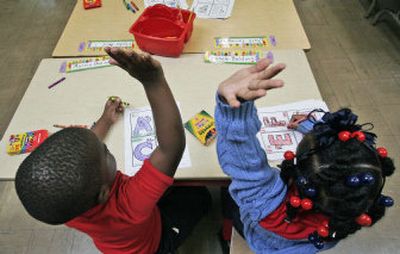New Orleans turns to charter schools

NEW ORLEANS – If the world is a classroom, New Orleans is a petri dish.
The city, notorious for having one of the worst public school systems in the country, has emerged from the aftermath of Hurricane Katrina as an experiment in education: Privately run charter schools, relatively limited before last year’s storm, now outnumber government-run public schools. And the numbers could rise as the demand for quality schools grows in this still-recovering city, state education officials predict.
“Suddenly, there’s an opportunity to improve the community and education as a whole,” said Robin Jarvis, who oversees the state-run school district that took over most of the city’s public schools after Katrina. “I think largely, before, they’d given up.”
Since Katrina, fewer than half the city’s public schools have reopened. Of the 53 that have opened, 17 are run by the state, five by the cash-strapped local school board and 31 by charter groups. Total enrollment, now at about 25,000 students but changing regularly, also is less than half of what it was before Katrina, school officials say.
People on both sides of the charter debate are watching what happens closely for evidence to bolster their theories that giving parents choices in public education pays off in student achievement – or that relying increasingly on independent, nonprofit groups to teach children is a dicey proposition.
While supporters promote charters as a step toward strengthening the city’s educational system, critics see them as eroding what’s left of traditional public schools. The National Alliance for Public Charter Schools has called New Orleans the closest the country has come to an all-charter district.
“You had a natural disaster in New Orleans,” said charter critic Nat LaCour, secretary-treasurer of American Federation of Teachers. “Now what’s happened in New Orleans is a man-made disaster.”
Charter schools receive public funding and generally accept a wide range of students. The schools have caught on in parts of the country where traditional public schools have faltered, such as Washington, D.C. Their charters can be pulled by the agencies that grant them – in New Orleans’ case, the state or the Orleans Parish School Board – if annual progress reports don’t show strides in student test scores.
The next few years could be telling, observers and officials say, for the future of public education in New Orleans and for struggling public education systems in other cities.
“We’re trying to develop a system of schools that will be absolutely the best for children in an urban area. If we succeed in that, we’ll be a model for the rest of the country,” said Linda Johnson, a member of the state Board of Elementary and Secondary Education.
Almost no one disputes New Orleans’ public school system was in disarray before Katrina.
For years, fourth- and eighth-graders were at the bottom in state math and reading scores, and high school students also rated poorly.
There were other problems too: The local school district was in debt, and many of its buildings were in shoddy shape at best, leaky or worn down after years of neglect.
As such, in July 2004, a year before the hurricane, the state took over five schools it deemed “academically unacceptable.” After Katrina, and intervention by lawmakers, responsibility for all but 17 schools fell to the state.
While some education leaders, eager for reform, saw Katrina as a blessing in disguise, union leaders like LaCour saw an excuse to begin replacing traditional public schools with the charters he contends were designed to be experimental.
A recent federal study – downplayed by a U.S. Education Department official as a snapshot in time – found that fourth-graders in traditional schools did better in math and reading than students in charters.